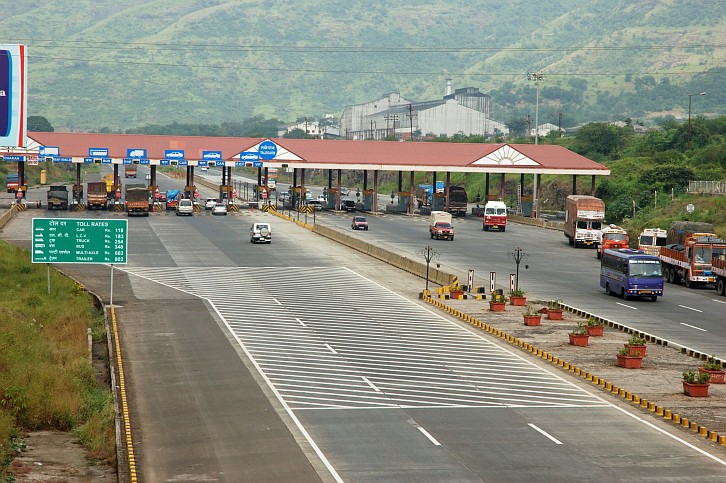HALTOM CITY, Texas-Shon Newsome almost got tricked into paying a toll for a third time.
But on a recent afternoon, just before she was about to drive onto a Loop 820 on-ramp that would have required her to pay a toll, the sales executive pulled off the highway in Haltom City and asked a bystander for directions. She was trying to figure out which lane on the two-lane ramp would take her to the toll-free lanes-but the answer wasn't clear.
A giant sign displaying toll rates straddled both lanes. A smaller sign on the right side of the road included an arrow showing that the left lane was for toll traffic. But by the time many motorists see that sign, it's too late to make a lane change without cutting off other drivers.
"I am very close to my house right now, and I have had an experience twice where I have mistakenly gotten into the wrong lane and didn't know where I was going and how to get off," Newsome told the Fort Worth Star-Telegram, adding that she encountered similar directional problems on other roads in Tarrant County. "I saw the tollway and was confused by whether I was going to have to go that direction and pay."
Nearly 50 miles of toll lanes have opened in the Fort Worth area during the past couple of years, many next to free lanes. Although the pay-as-you-go roads have become part of life in Tarrant County, many motorists say the signage distinguishing the free lanes from the toll lanes is still confusing.
They say many seemingly alert and intelligent drivers are unwittingly ending up on toll lanes-and getting slapped with bills, often several dollars per trip, that they didn't intend to accrue.
"It's extremely confusing," Newsome said. "I don't know what can prevent this, but I think that the signage
is very bad."
State law essentially says it's up to motorists to know whether they are getting on a toll road, and then to pay up when the bill arrives. Officials from agencies that are building and managing toll lanes say their designers go out of their way to ensure that signs are as clear as possible to help unfamiliar motorists navigate traffic.
Officials say they receive complaints from time to time about motorists who say they accidentally got on a toll road, and when those complaints come in each case is reviewed. But in nearly all cases, the motorist is left with the responsibility of paying the toll.
Excessive speed and inattentive driving often cause motorists to miss the cues they need to figure out the distinction between toll and toll-free lanes, said Robert Hinkle, spokesman for North Tarrant Express Mobility Partners, a group of companies that built toll lanes on Loop 820 and Texas 121/183 in Northeast Tarrant County and is building similar lanes on Interstate 35W in Fort Worth.
"Our advice is for folks to put down your sandwich, put down your coffee, put down your phone and pay attention," Hinkle said. "We do get calls about it, but it's not an everyday occurrence."
Hinkle said the companies have no immediate plans to change signs in the area of Loop 820, or Texas 121/183, also known as Airport Freeway. On many of the ramps leading to toll lanes, the pavement is marked with the word Express, but not the word Toll. Also, some roadside signs show the blue and white Loop 820 interstate shield with the word Express, not Toll.
One key difference that may be contributing to the confusion is the brand of toll lanes on the roads today, compared with years past. In most cases, the Metroplex now has all-electronic toll roads, meaning there are no humans in toll booths to make change-or to warn you to turn around if you don't
want to pay.
Instead, the toll lanes are wide open. They are built to make life easier for the everyday commuter, who often has a Toll-Tag on the windshield that makes it easy to pay tolls automatically. But for those without a TollTag, a camera system photographs license plates and mails the registered owner a bill.
The lack of toll booths with gate arms often makes it possible for motorists to unintentionally enter a toll road.
The other recent development is the use of toll express lanes-also called TEXPress lanes-on highways that are otherwise toll-free. The express lanes make it possible for motorists to decide each day whether they wish to pay a little extra to get on the toll lanes and get where they're going more quickly.
But because toll lanes and toll-free lanes are now side by side in so many places, drivers must decide which lanes to take. And because of that decision-making frequency, they are prone to making more mistakes.
Although state law makes it clear that motorists are responsible for any tolls they rack up -intentionally or not-many motorists actually get away with their first toll for free.
The North Texas Tollway Authority, which owns the TollTag brand and processes most toll charges in Dallas-Fort Worth-even though the authority doesn't own and operate all the toll roads-has a practice of not sending out a bill to toll road users until multiple transactions have been tallied, a spokesman said.
"NTTA generally does not issue an invoice until a driver accrues three tolls, or more than $2.50 in transactions," spokesman Michael Rey said in an email.
Rey said the agency generally doesn't issue refunds for accidental tolls because "We are confident all are well-marked as toll roads and it would be difficult to determine driver intent, at best."

